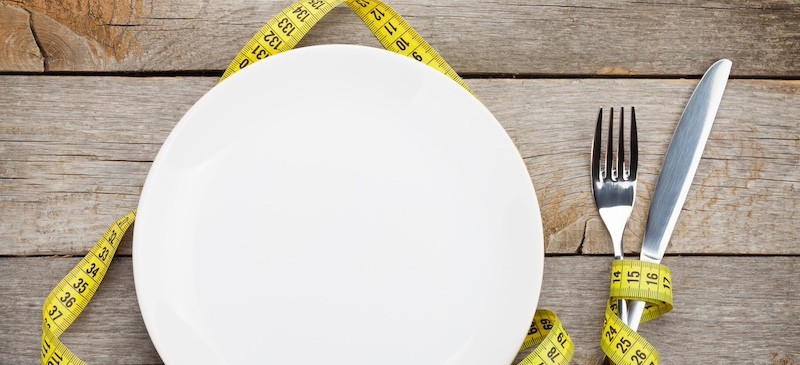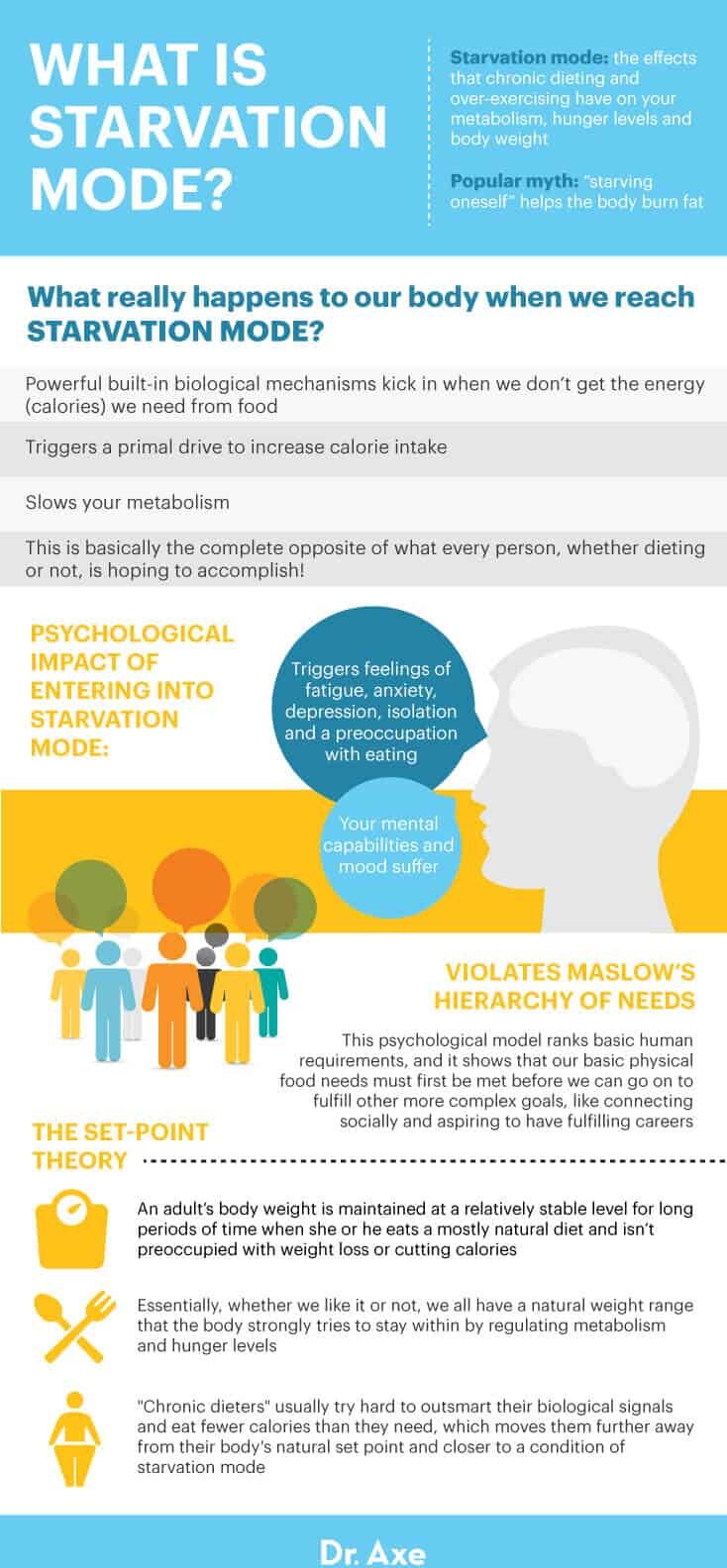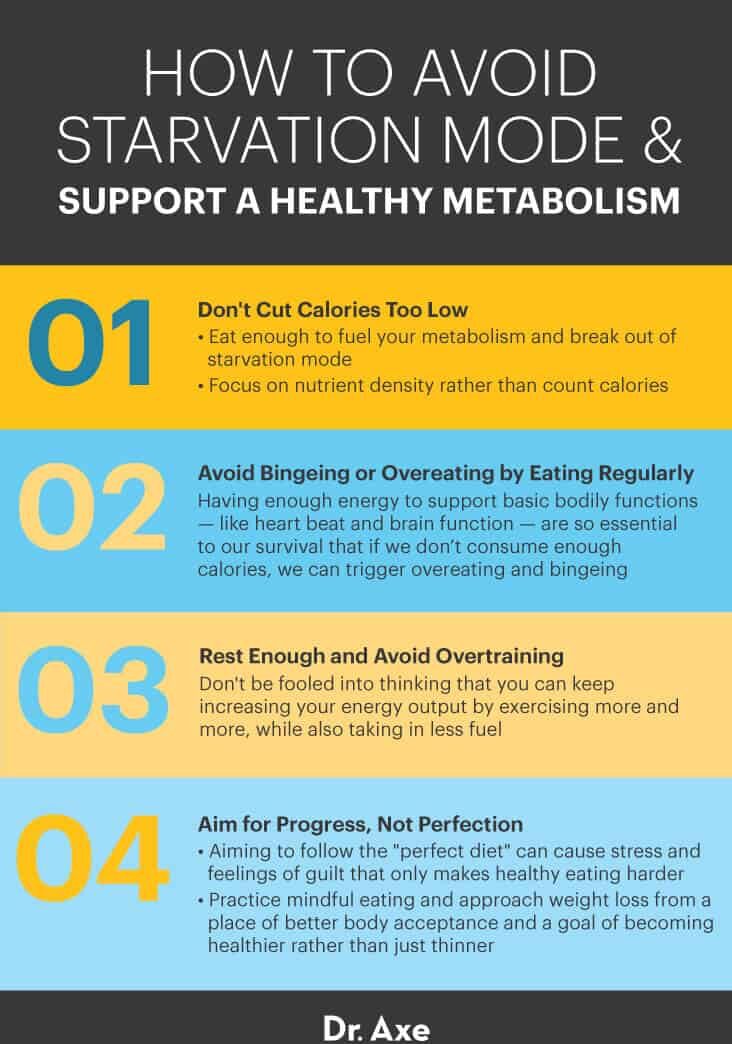This Dr. Axe content is medically reviewed or fact checked to ensure factually accurate information.
With strict editorial sourcing guidelines, we only link to academic research institutions, reputable media sites and, when research is available, medically peer-reviewed studies. Note that the numbers in parentheses (1, 2, etc.) are clickable links to these studies.
The information in our articles is NOT intended to replace a one-on-one relationship with a qualified health care professional and is not intended as medical advice.
This article is based on scientific evidence, written by experts and fact checked by our trained editorial staff. Note that the numbers in parentheses (1, 2, etc.) are clickable links to medically peer-reviewed studies.
Our team includes licensed nutritionists and dietitians, certified health education specialists, as well as certified strength and conditioning specialists, personal trainers and corrective exercise specialists. Our team aims to be not only thorough with its research, but also objective and unbiased.
The information in our articles is NOT intended to replace a one-on-one relationship with a qualified health care professional and is not intended as medical advice.
Why ‘Diets’ Don’t Work & How to Avoid Starvation Mode
February 20, 2024

We all have powerful built-in biological mechanisms that kick in when we don’t get the energy (calories) we need from food. Under-eating for your body’s needs can trigger a primal drive to increase calorie intake, along with a slowing down of your metabolism — which is known as starvation mode. This is basically the complete opposite of what every person, whether dieting or not, is hoping to accomplish!
Aside from the negative psychological impacts that cutting calories too low (such as in the CICO diet) can have on your health, even your mental capabilities and mood suffer when you enter “starvation mode.” Reduced energy intake can trigger feelings of fatigue, anxiety, depression, isolation and a preoccupation with eating.
This idea is even represented by the principles of fundamental needs in Maslow’s Hierarchy of Needs — a psychological model that ranks basic human requirements. Maslow’s model showed that our basic physical food needs must first be met before we can go on to fulfill other more complex goals, like connecting socially and aspiring to have fulfilling careers.
What Is Starvation Mode?
Starvation mode is a term given to the effects that chronic dieting and over-exercising have on your metabolism, hunger levels and body weight. The body has a complex biological system in place that helps ensure that we get enough energy (food) when we’re running low and also that we rest more, yet unfortunately many people choose to override these important messages in an attempt to lose weight fast.
While they might lead to temporary weight loss, strict diets can sabotage your metabolism and actually become one of the reasons women struggle to lose weight. Many research studies have found that sudden weight loss and cutting calories too low can reduce metabolic function due to the body trying to preserve energy from a lack of food.
While starvation mode won’t occur when you cut calories for a short period of time, such as over a few days when you’re sick, for example, it will likely be the result when you have a low energy intake for prolonged periods, such as several weeks or months.
How exactly does starvation mode develop? One theory of starvation is that your cells detect low levels of ATP when you’re not eating enough. ATP (adenosine triphosphate) is the chemical energy that powers your cells and is formed from a combination of all macronutrients that you eat, including carbohydrates, proteins and fats. These macronutrients get converted to one universal energy denomination (ATP) that keeps the body functioning normally, so a low level of ATP production sends signals to the brain that something isn’t right.
When you normally support your metabolism by eating enough food and getting appropriate rest, the body burns a combination of nutrients coming in from your diet along with some stored body fat in the form of free fatty acids. First, the body uses the calories you recently consumed that are present within the digestive tract or were recently stored as glycogen reserves in muscle tissue and liver cells, and then it goes on to use your fat stores as a backup method.
This process is all well and good and what is experienced when you operate in a normal “fed state.”
The body’s fed condition results in standard processes like the secretion of insulin, which is one of the two most important regulators of your metabolism. Insulin has the role of stimulating the storage of carbohydrate (glucose) fuels and the synthesis of proteins, both of which keep your metabolism humming along. The liver also helps by limiting the amount of glucose available in the blood and storing it as glycogen so it can be used as back-up fuel when food is scarce.
This process manages your innate hunger signals, including the hormones ghrelin and leptin, which are responsible for increasing or curbing your appetite based on available body fat. Once the body begins to detect that it’s experiencing starvation due to low calorie intake, however, lean tissue and muscle fibers can be used as energy sources instead of stored fat or glycogen — not exactly what you want!
In an attempt to make sure you have enough “fuel” to survive, the body sacrifices amino acids (proteins) from hard-earned muscle tissue, leaving you with a slowed down metabolic rate and a harder time keeping weight off long term.
Your appetite can also go through the roof when you experience starvation mode, with strong cravings (which can include sugar addiction) becoming common. For example, under-eating drives the hormone neuropeptide Y (NPY) into action, which makes you naturally seek more carbohydrate-dense foods. NPY levels are naturally the highest in the morning because you’ve gone through the night without food.
Over time, reduced calorie and carb intake below your needs can cause changes in NPY that can easily lead to high-carbohydrate binges as your body desperately tries to acquire more glucose.
Related: Reverse Dieting: Does It Help or Hurt Weight Loss?

Finding Your Body’s Natural “Set Point”
Research is now confirming what we’ve basically always known intuitively about our weight: Adults’ body weights are maintained at a relatively stable level for long periods of time when they eat a mostly natural diet and aren’t preoccupied with weight loss or cutting calories.
This is called the “set-point theory,” which suggests that “body weight is regulated at a predetermined, or preferred, level by a natural feedback control mechanism.”
Essentially, whether we like it or not, we all have a natural weight range that the body strongly tries to stay within by regulating metabolism and hunger levels. An increase in hunger, a slowing metabolism and fatigue (all symptoms of starvation mode) are the body’s attempts at returning someone to her natural set point.
Our natural weight is determined mostly by genetics, and despite our best efforts, it’s very hard to stay outside this range for a long periods of time. Outside of our conscious minds and control, preferred body weight and body fat content are maintained through several factors and bodily systems, including hormones, neural pathways, various brain nuclei and many different neurotransmitters.
According to the set-point theory, the body processes information about weight and calorie intake within the “control center” of the brain called the hypothalamus. The hypothalamus decides if the body is receiving enough energy and resting enough based on calorie intake, then sends signals throughout the body via hormones that regulate hunger, food intake or energy expenditure.
This entire system works to correct any deviations in preferred body weight from the natural “set point.”
The trouble is when someone bases food intake and energy expenditure on a set of rules created by outside influences, like a fad diet plan, she stops listening to her own inner signs of hunger and fullness. Dieters can become preoccupied with “rules” and regulations, like only eating at a certain time, eating based on how many calories were burned during exercise, and avoiding natural foods that contain too many carbs, fat grams, etc.
“Chronic dieters” usually try hard to outsmart their biological signals and eat fewer calories than they need, which moves them further away from their body’s natural set point and closer to a condition of starvation mode.
Here’s a real-life example of the toll that dramatically cutting calories can take:
One of the first studies to demonstrate the powerful backlash of the body entering starvation mode was the famous study conducted during World War II called the “Minnesota starvation experiment.” Dr. Ancel Keys designed the 1944 study to investigate the effects of starving on the body’s physical and mental well-being in order to know how to best help soldiers suffering from famine returning from war as well as underfed victims of the war around the world. The subjects were 32 healthy men who didn’t have any signs of mental or physical health concerns before beginning the experiment.
Before beginning the yearlong study, the men ate as much as they wanted, which averaged about 3,492 calories per day. The next six months the men’s food supply was limited to around 1,500–1,800 calories daily in an attempt to lower their body weights (to 75 percent of the starting weight) and ignite natural starvation responses. They were also very active, walking many miles per day and burning a high number of calories — much more than they were consuming.
When the six-month starvation period was over, the men were allowed to eat whatever and how much of what they wanted again (intuitive eating). The results were pretty astounding. Many of the men developed strong preoccupations with food, feelings of guilt and shame when eating large quantities at once, social isolation and feeling less close to others, ritualistic eating behaviors, mood swings, binge eating, and feelings of fatness.
The men’s metabolic rates also drastically decreased (with some sources showing up to 40 percent decline). Many men reported feeling downright obsessed with food, having uncontrollable food cravings and ravenously eating uncomfortable amounts of calories whenever they had the chance.
Several men even failed to adhere to their diets during the six months of starvation because they reported eating disorder-like behaviors, including bingeing or purging, complete loss of “willpower” and personality changes. The outcome of the Minnesota starvation experiment and many other longitudinal studies show that restricted eating behaviors are simply not physically or psychologically sustainable in the long term and are ultimately damaging to your health.
How to Avoid Starvation Mode
1. Don’t Cut Calories Too Low — Make Sure You Eat Enough!
If you feel that you fall into the category of “chronic dieter” and are guilty of drastically cutting calories, ignoring your natural hunger signals and yo-yo dieting, it’s time to make some changes because these are unhealthy ways to lose weight. The first step is to eat enough to fuel your metabolism and break out of starvation mode. For many people, this means focusing on nutrient density rather than counting calories, macronutrients or calories burned working out.
In order to end starvation mode and boost your metabolism, you need to convince your body that it’s well-fed and not in danger. Your hunger drive is a part of your mind-body connection and is largely based on how your body perceives your environment.
Your body wants to make sure you aren’t experiencing a famine or life-threatening situation, so when it stops receiving the amount of calories it’s accustomed to, it will react in a strong way. The last thing you want to do is slow down your ability to use calories or build lean muscle tissue, but this is exactly the result of starvation!
Figure out your body’s caloric needs based on factors like your gender, current weight and activity level, and then aim to meet these needs every day. If you do need to lose weight for health reasons, do so slowly and be realistic about how long this process can take.
It doesn’t pay off long term to lose weight rapidly in an unhealthy way, just to sabotage your metabolism and wind up gaining the weight right back. While very overweight people might be able to lose weight quickly without damaging their metabolisms greatly, most experts recommend losing about one to two pounds per week for most adults through a combination of exercise and reducing calories moderately.
One diet that can verge into starvation mode territory is the Military diet.
2. Avoid Binging or Overeating by Eating Regularly
As mentioned earlier, having enough energy to support basic bodily functions — like heart beat, temperature regulation, breathing and brain function — are so essential to our survival that if we don’t consume enough calories, we can trigger biological processes that leave us vulnerable to overeating, binging and feeling pretty miserable, both physically and psychologically.
Many people believe that they overeat and “wreck their diets” due to a lack of willpower, but in fact binge-type behavior is usually caused by biological drives as a result of restriction and drastically cutting calories. The sheer power and intensity of the body’s natural biological eating signals shouldn’t be underestimated — this is powerful and primal stuff!
Many studies have shown that dieting and attempting to lower your body weight by restricting food intake and exercising more can backfire and actually be counterproductive. As you’ve learned, restriction can change someone’s brain chemistry and cause neurochemical signals to be sent that increase the body’s hunger.
Some studies have even shown that salivation increases with food deprivation and that higher levels of digestive hormones are usually present in people who are dieting before and after eating, as an attempt to make the body eat a large quantity of food at one time.
While it might be possible to ignore signals of increased hunger and fatigue temporarily, eventually most people “give in” and wind up overeating. This can trigger feelings of shame, guilt and frustration that make the whole weight-loss process even harder.
Instead of depriving yourself and ignoring your drive to eat enough, make sure you eat regularly — including having three solid meals every day and possibly several snacks, too, depending on your needs and level of activity. If you need even more structure, give time-restricted eating a chance.
Whatever you do, avoid entering into a cycle of yo-yo dieting where you restrict too much, wind up breaking your own rules and overeating, and then feeling down on yourself to the point that you drop the whole attempt to take better care of your health.

3. Rest Enough and Avoid Overtraining
The biological chemicals that regulate appetite are also directly tied to your level of activity. Don’t be fooled into thinking that you can keep increasing your energy output by exercising more and more, while also taking in less fuel. When you don’t give your body the fuel it needs, you’ll likely notice a decline in motivation, mood, energy levels, state of mind and quality of your sleep.
Fuel your workouts by eating enough throughout the day and having pre-workout snacks and post-workout meals, too, if needed. Also make sure to take rest days when needed and to avoid overtraining that can leave you tired, moody and even depressed.
4. Aim for Progress, Not Perfection
While eating regularly, consuming enough calories to fuel your body and getting enough rest will all help control the biological processes that determine your hunger and metabolism, you will still need to consider the psychological aspects of past periods of starvation. Studies have shown that in food-deprived people (both adults and children) a drastic reduction in calories and severely restricting certain foods can cause increased cravings and a preoccupation with eating the “forbidden foods.”
While it’s important to fill your plate with real, whole foods and try to avoid processed foods as much as possible, aiming to follow the “perfect diet” can cause stress and feelings of guilt that only make healthy eating harder. We’re only human, and no one is perfect, so it’s smart not to make your goal something that is obviously unattainable.
Instead of being overly hard on yourself, practice mindful eating, and approach weight loss from a place of better body acceptance and a goal of becoming healthier rather than just thinner.
Try not to view foods in terms of “good or bad.” Do your best to eat majority unprocessed and nutrient-dense foods, but except that there’s a time and place for having some fun and being flexible with your diet, too. This approach usually winds up giving you more satiety every time you eat, since it diminishes the need for guilt.
Many people find that the “80/20” rule helps them stick to eating a healthy diet long term, meaning about 80 percent of what you eat is nutrient-dense, while the other 20 percent is more for mental health, giving in to cravings and eating socially. Accepting that you won’t always be able to eat the way you’d ideally like to is part of cultivating a healthy relationship with food and avoiding “food phobia,” mistrust in your body, binges or overeating.



